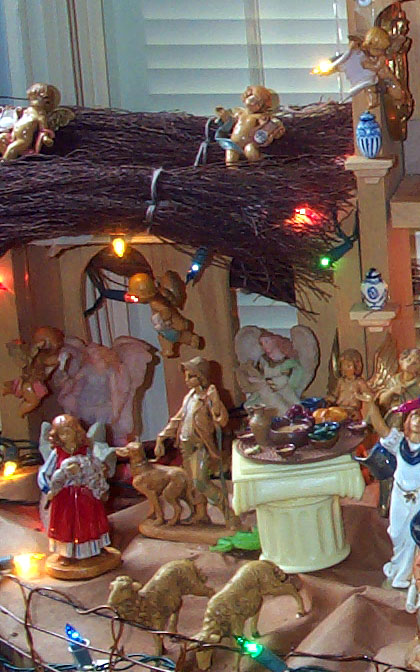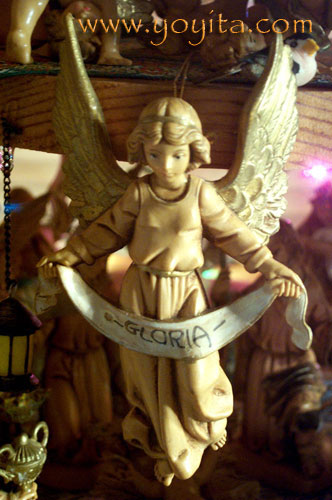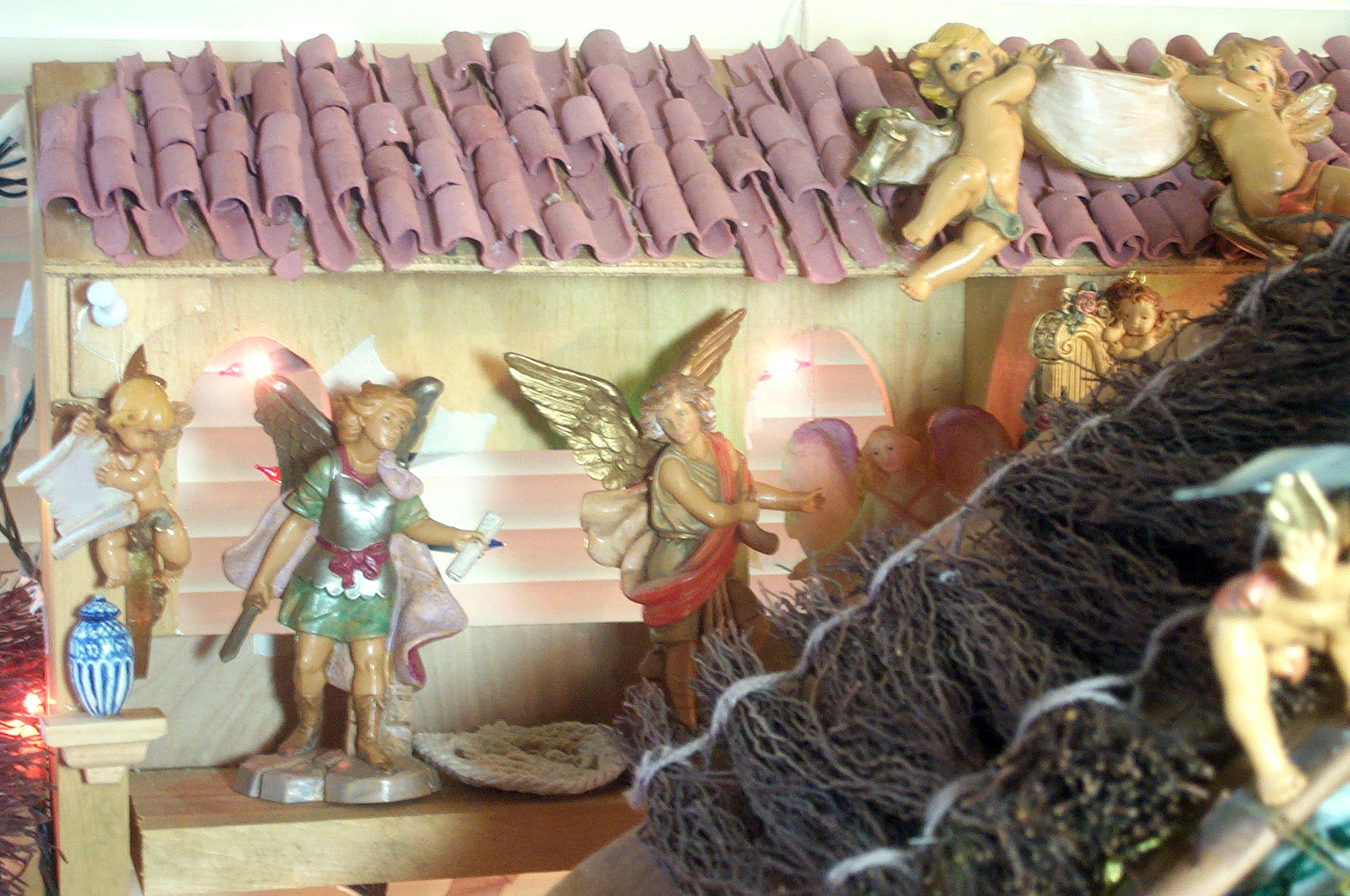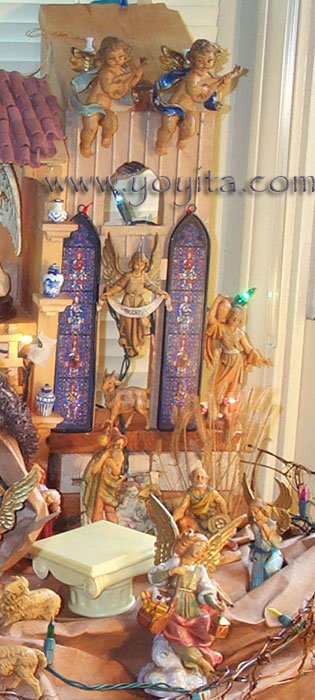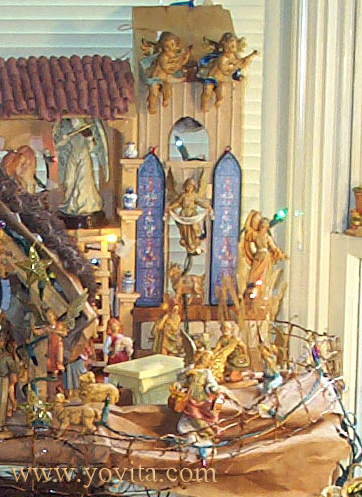Angels
An angel (Lat. angelus, pl. angeli) is a supernatural being found in many religions. In Christianity, Islam, Judaism, and Zoroastrianism, angels, as attendants or guardians to man, typically act as messengers from God.
Angelology (from Greek: aγγελος, angel, "angel"; and λόγος, logos, "study") is a branch of theology that deals with a hierarchical system of angels, messengers, celestial powers or emanations, and the study of these systems. It primarily relates to Kabbalistic Judaism and Christianity, where it is one of the ten major branches of theology, albeit an often neglected one.
Some secular scholars believe that Judeo-Christianity owes a great debt to Zoroastrianism in regards to the introduction of angelology and demonology, as well as the fallen angel Satan as the ultimate agent of evil, comparing him to the evil spirit Ahriman. As the Iranian Avestan and Vedic traditions and also other branches of Indo-European mythologies show, the notion of demons had existed long before.
Theologians agreed that angels have no gender (see more extended discussion below). Whilst artists avoided making the Virgin and saints too attractive, so that inappropriate thoughts would not be aroused in the beholder, no such constraint applied to angels, who have no sex. Their exceptional beauty was well attested in Scripture. The long plain dress or tunic traditionally given to most angels comes hardly altered from the Byzantine tradition, where it had, if anything, a male connotation. In the Renaissance these were often brightly coloured, but before and after were mostly plain white.
Angels appear in several Old Testament (Hebrew Bible) stories, in addition to the ones previously mentioned above. These include the warning to Lot of the imminent destruction of Sodom. Many Bible chapters mention an "angry God" who sends His angel to smite the enemies of the Israelites. Traditional Jewish biblical commentators have a variety of ways of explaining what an angel is. The earliest Biblical books present angels as heavenly beings created by God, some of whom apparently are endowed with free will. Later biblical books in the Tanakh present a stunningly different view of angels, as the Jewish beliefs about such things developed over the many years covered in the Bible. Such a differing perspective on angels is discovered in the Book of Ezekiel, where these angels bear no relation whatsoever to the former understanding of what an angel was.
In the New Testament angels appear frequently as the ministers of God and the agents of revelation (e.g. Matthew 1:20 (to Joseph), 4:11. (to Jesus), Luke 1:26 (to Mary), Acts 12:7 (to Peter)); and Jesus speaks of angels as fulfilling such functions (e.g. Mark 8:38, 13:27), implying in one saying that they neither marry nor are given in marriage (Mark 12:25). Angels are most prominent in the Apocalypse. The New Testament takes little interest in the idea of the angelic hierarchy, but there are traces of the doctrine. The distinction of good and bad angels is recognized. Good angels mentioned by name are Gabriel and Michael (Luke 1:19; Daniel 12:1). Scripture also mentions a tempter Satan, the scribes name the ruler of demons as Beelzebub, and the angel of the abyss Apollyon (Mark 1:13, 3:22; Rev. 9:11). Apollyon, (Hebrew Abaddon) a name for an angel mentioned in Revelation 9:11, is believed by some to be a good angel that guards the gates to the traditionally known hell. Revelation 10:1 describes another angel, although unnamed, some say it is Metatron. The Christian Greek scriptures also imply an angelic hierarchy; archangels (namely Michael, mentioned in both Daniel 10:13 and Jude 9, Gabriel, and Raphael), principalities and powers (Rom. 8:38; Col. 2:10), thrones and dominions (Col 1:16). The hierarchies of principalities, powers, thrones, and dominions are questionable by some Christian denominations due to the ambiguity of the context. Romans 8:38 may refer to other things besides angels if the context includes opposition beyond spirits themselves. The scope of Col. 1:16 covering "all things created" also extends far beyond angels by themselves. Other hierarchies accepted from the Old Testament include seraphim and cherubim.
The Catholic Church teaches that there are several ranks of angels; among them Cherubim, Seraphim, Powers, Principalities, Archangels, and Dominions.
Angels occur in groups of four or seven (Rev 7:1). The Angels of the Seven Churches of Asia Minor are described in Rev. 1-3; practically, the angels are personifications or representatives of the seven congregations. Daniel 10:12,13 also appears to depict angels in opposition (presumably fallen angels) to other angels, taking on the roles of prince-angels for nations, in this case the "prince of the kingdom of Persia."
While angels and demons alike are generally regarded as invisible to human sight, they are frequently depicted as human-like creatures with wings, though many theologians have argued that they have no physical existence, but can take on human form. The angels' wings are heavily implied by the Scriptures. Seraphim are depicted in art and scripture as having six wings (Isaiah 6:1-3), and Cherubim four
Theologians agreed that angels have no gender (see more extended discussion below). Whilst artists avoided making the Virgin and saints too attractive, so that inappropriate thoughts would not be aroused in the beholder, no such constraint applied to angels, who have no sex. Their exceptional beauty was well attested in Scripture. The long plain dress or tunic traditionally given to most angels comes hardly altered from the Byzantine tradition, where it had, if anything, a male connotation. In the Renaissance these were often brightly coloured, but before and after were mostly plain white.
Byzantine angels were also often shown in military outfits, and, transmitted by icons from Crete in particular, this tradition was transferred to Western art, especially for Gabriel and Michael, who wear versions of Byzantine officer's armour and clothing into the Baroque period and later. The same archangels, when in attendance on Christ or the Virgin, wear the loros, a jewelled strip of cloth hanging vertically down the front of the body. This was worn only by the Imperial family and their bodyguard; the archangels were seen as God's bodyguard. They also often carry long white wands of office. Hence, when a high ranking Byzantine in a visionary dream in 586 saw two men he took to be bodyguards of the Emperor, they subsequently turned out to be angels. For other scenes, the same angels must appear incognito to accord with, for example, their appearance to Abraham. However artists are very reluctant to depict them in normal clothes, or without wings.
In the Renaissance, the classical putto, usually naked, was first revived in secular and mythological subjects, but they soon appeared, often in great quantity, as angels, becoming almost the norm in compositions with a number of angels merely in attendance.
In Arabic, the language of the Qur'an, angels are called "Malaaikah"(sing: Malak), similar to the Hebrew word "mal'ach". The belief in angels is central to the religion of Islam, beginning with the belief that the Qur'an was dictated to the prophet Muhammad by the chief of all angels, the archangel Gabriel. Angels are thus the ministers of God, as well as the agents of revelation in Islam.
In Islam, angels are benevolent beings created from light and do not possess free will. They are completely devoted to the worship of God and carry out certain functions on His command, such as recording every human being's actions, placing a soul in a newborn child, maintaining certain environmental conditions of the planet (such as nurturing vegetation and distributing the rain) and taking the soul at the time of death. Angels are described as being excessively beautiful and have different numbers of wings (for example, Gabriel is attributed as having 600 wings in his natural form) and have no gender. They can take on human form, but only in appearance. As such, angels do not eat, procreate or commit sin as humans do.
According to the majority of Islamic scholars, angels are incapable of committing sin, and therefore cannot fall from grace, excluding the Iblis who chose to do evil because he had free-will and is not considered as a fallen angel, but a separate entity made of fire called jinn. Scholars cite the following Quranic verse, "And when We said to the Angels; 'Prostrate yourselves unto Adam.' So they prostrated themselves except Iblis. He was one of the jinn..." (Surat Al-Kahf, 18:50). Angels, unlike the fiery nature of jinn, are beings of goodness and cannot choose to disobey God, nor do they possess the ability to do evil.
The archangel Gabriel is attributed with sending the message of God to all the Prophets (including the Psalms, Torah, Bible and Qur'an). Other angels include Michael who discharges control of vegetation and rain, Israfel who will blow the trumpet at the day of resurrection, and Azrael, the angel of death (as opposed to the Christian view that Gabriel is the angel of good news). The angels Nakir and Munkar are assigned to interrogate the dead before judgement day; and there are nineteen angels over-seeing the punishments of hell unflinchingly (Surat Al-Muddaththir, 74:30). There are eight massive angels that support the Throne of God (Surat Al-Haaqqa, 69:17). Every human being is assigned two angels to scribe a record of all actions done by the individual throughout their life, which will be used in evidence for or against the person by God on the day of judgement. |


